Attic Vents - An Overview
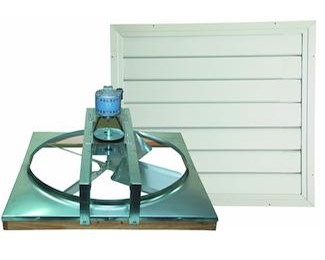
Attic Vents - The Whole House Attic Vent
Creating adequate ventilation in a home's attic space is essential for removing moisture and condensation in colder months, and lowering excess heat in the warmer summer months. These and other factors can result in damage to the roofing materials and interior wood, and lead to higher energy costs.
Managing an attic's air circulation is done primarily through the use of vents in the roof and attic. There are several types of vents available, including soffit, ridge, gable and roof turbines. Most building codes for residential homes will require some sort of venting.
Attic Vents - The Soffit Vents
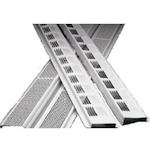
Soffit Vents For Your Attic
Soffit vents are placed in the roof's overhang, and allow airflow up into the attic. Soffit vents face downward and are screened to keep water, snow, insects, and other undesirable things from getting into the vents. The air that soffit vents allow in acts to cool the attic and increases airflow to reduce excess moisture in the attic space. Soffit vents are the most common form of attic venting in newer home construction.
During construction or renovation, it is critical that soffit vents are not covered by insulation on the home's interior, as this will obviously keep the soffit vents from doing their job. Covering soffit vents is a common problem associated with insulation installation.
Attic Vents - The Gable Vents
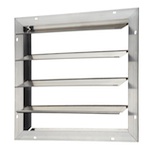
Gable Vents
Gable vents are louvered openings in the attic that come in various shapes such as square, triangular, or round. Gable vents are designed to keep snow, wind, and rain out while allowing natural airflow into the attic space. Gable vents are typically installed just below the roof's peak on the attic wall, with a screened backing to keep critters and birds out.
Gable vents do provide some ventilation, but may not always be as efficient as other types of attic vents since they require a decent wind, move little air from soffit vents into the attic without powered fans, and allow for pockets of unmoved air which can lead to heat and moisture build-up.
Attic Vents - The Ridge Vents
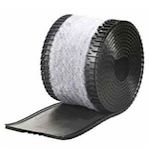
Rolled Ridge Vent Material
Ridge vents are one of the most effective and efficient types of attic vent. Ridge vents run along the entire span of a roof's peak, covered with shingles to make them unobtrusive and blend in with the overall design of the roof. Ridge vents hold an advantage over other types of attic vents. They ventilate the entire attic space evenly, maximizing air flow into the space. Ridge vents work equally well year-round, from the frigid cold winter months to the searing heat of the summertime.
Ridge vents are screened to keep bugs out, and their positioning under shingles protects them from the elements and keeps rain, snow and wind from penetrating into the attic. By placing ridge vents at the very peak of the roof, the risk of accidental covering or blockage is eliminated.
Attic Vents - The Roof Turbines
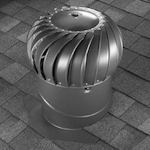
Roof Turbine Roof Vents
More common in commercial structures than in residential homes, roof turbines can be used to pump fresh air into and out of an attic.
Roof turbines use the natural power of the wind to spin a raised vent, which is connected to a fan blade that pulls an attic's hot air up and out of the vent tube.
Roof turbines typically work better in conjunction with other types of attic vents to ensure maximum air intake and refresh an attic's stagnant or heated air.
Attic Fans: A Powered Alternative
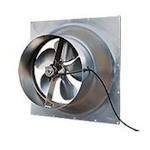
Solar Powered Gable Vents
Some residential homes use attic fans in association with the other passive vent types described above to increase an attic's ventilation. Some attic fans use an automatic thermostat to turn on the fan when the attic air reaches a certain temperature to aid with venting.
Attic fans do use electricity so there is an increased use of energy in the home, as well as a higher up-front installation cost. If installed properly and used correctly, attic fans can create more in reduced heating or cooling cost savings than they create in electricity usage.
For a well-designed, super-efficient green home, there will often be enough insulation and natural air ventilation through passive venting to eliminate the need for a powered air fan. For green homeowners who need the extra boost in ventilation that attic fans provide, newer solar powered fans are available that are powered by the energy of the sun during the hot parts of the day when a fan is needed that require no electricity at all.
comments powered by Disqus

























































































































































































